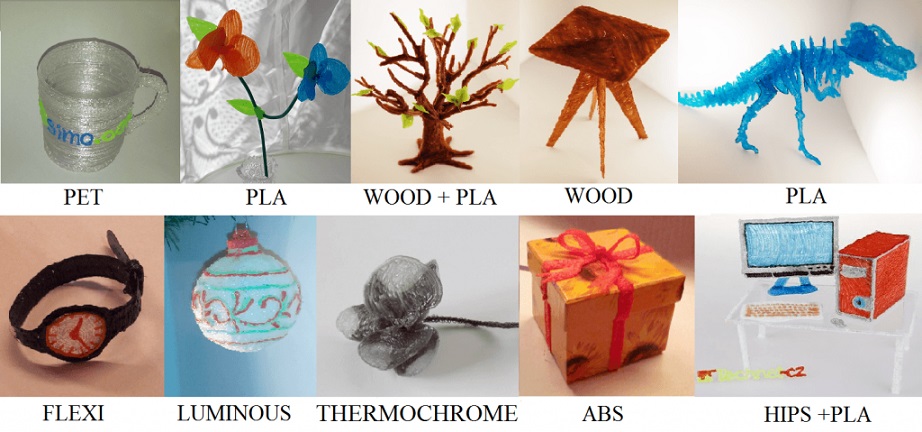A coral reef sculpture, Orthodontic treatment, or automotive components 3D printing materials can be fabricated into any innumerable desirable forms. Do want to know what are these miraculous 3D printing materials and why the 3D printing filament market growth is expected to flourish? If yes, then this article is all you need to read.
What are 3D printing and 3D printing material?
A 3D printing material is a thermoplastic that is moldable at a particular elevated temperature and solidifies upon cooling. The process of creating physical objects with the help of these printing materials is called 3D printing. The object is designed as a 3D model using specific measurements with printing software. This is an efficacious process that builds up custom objects with optimum manufacturing and production costs.
How does 3D printing work?
A prototype of the object is designed to create a 3D printing file. This file is eventually transferred to a 3D printer using 3printing software. The printer reads out the design and starts printing thin layers of material to create the desirable objects. The 3D modeling software is the tool using which the design of an object with the proper dimensions is created. Computer-Aided Design (CAD) is an example of modeling software.
Who uses 3D printing?
3D filament business has become a way to transform and express the creativity of an artist into a visible entity. 3D printing technology is also utilized in the commercial field to make products according to the needs of the customers. The uses of the 2D filament are in a variety of fields like advanced medical radiation treatment, artistic sculptures, beverage vending machines, orthodontic treatment systems, prototype design of the automobile sector, educational research, and the lighting industry.
How to choose the right filament?
Choosing the right kind of filament is imperative for getting the desired results. There are a plethora of varieties out in the 3D printing filament market. The choice of the filament will depend on the type of product you want to make. Here are the types of 3D filament:
-
ABS 3D Filament
This is the most popular filament for its impact-resistant and toughness. The ABS 3D filament is strong yet flexible which makes it a great choice for printing in 3D. This filament is durable, flexible, cheap, and lightweight. Although, this filament needs a high temperature to reach its melting point.
Application- The filament has a huge benefit in making automotive parts, kitchen appliances, toys, and electronic housings.
-
PETG/PET Filament
This filament is preferable in making plastic bottles as it is harmless and emits no unpleasant odors. The moment it is exposed to cold, the filament quickly solidifies in a non-transparent state. The filament is flexible, strong, and food safe. It does not shrink, warp or degrade.
Application- This filament is approved by the FDA which makes it completely food-safe. So the filament is good for making food containers and kitchen utensils.
-
PLA 3D Filament
This filament is made up of organic materials such as sugarcane and starch. It has a pleasing appearance because of its smooth and sheen appearance. The filament produces a sweet aroma while heating and is available in effects like glow-in-the-dark colors. Although the filament is susceptible to clogging and can attract moisture.
Application- PLA filament is extensively utilized in medical stitching and surgical implants such as rods, screws, and mesh. Furthermore, the materials are also used in various other fields such as food packaging, disposable tableware, etc.
-
PETT Filament
The PETT filament is a non-biodegradable but recyclable material. It is strong, flexible, food-safe, and impressive in bridging. The filament does not warp, shrink and not absorb moisture.
Applications- These filaments hold utility in making food packaging materials.
-
Sandstone Filament (PLA + Brick)
The sandstone filament renders a phenomenal finish to the 3D-printed parts. The sandstone filament is a mixture of PLA material with fine chalk powder and produces a stone-like texture. It gives an impeccable sandstone appearance. Although, the products are brittle and prone to snapping and breaking.
Applications- The sandstone filament (PLA + Brick) is most popular in making architectural and landscapes display models.
-
Wood Filament
The 3D wood filament consists of a mixture of recycled wood binding with a polymer. The output product looks and smells like real wood. People can make various wood-like surfaces and shades.
Application- The wood filament is used in decoration, making tables and chairs, figurines, and ornate boxes.
Conclusion,
These are just a few types of filaments that are available in the 3D printing filament market. The variety of filaments is so diverse that you can get any variety of filaments as per your requirement.





Leave a Reply